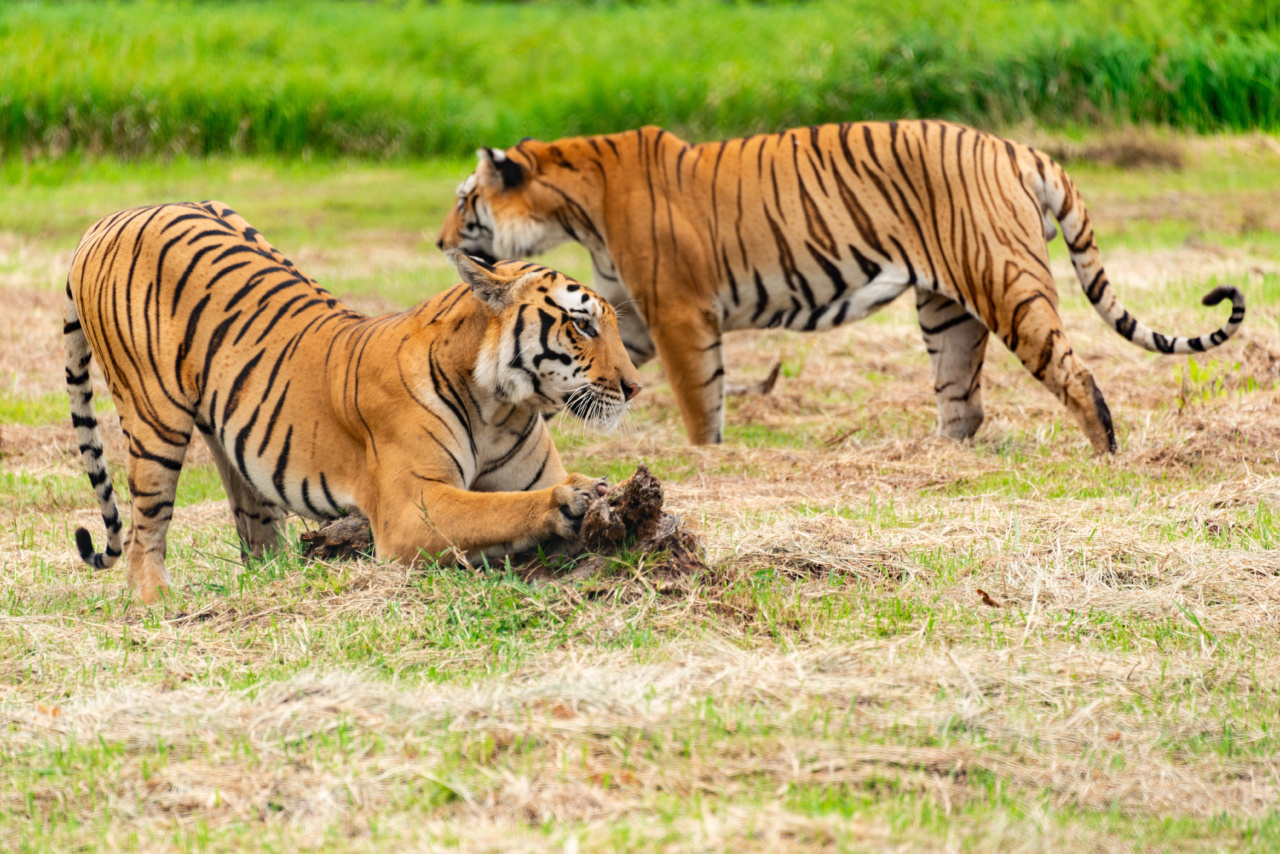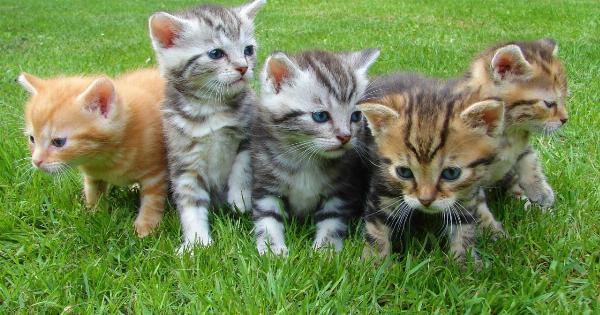Cats are known for their curious nature and their love for exploring their surroundings.
It’s no surprise that many cats are drawn to the taste of grass, and as a result, many cat owners find their feline friends munching on grass from time to time. While some may find this behavior puzzling, there are actually a variety of benefits that cats can gain from eating grass.
1. Aiding Digestion
One of the main benefits of cats eating grass is its potential to aid in digestion. Cats are obligate carnivores, which means their bodies are designed to digest and process animal protein.
However, in the wild, cats also consume the stomach and intestines of their prey, which contain plant material such as grass. This grass provides them with fiber that helps regulate their digestive system and promotes the passage of hairballs.
2. Natural Laxative
Grass acts as a natural laxative for cats. When cats consume grass, it can help them eliminate any indigestible material, including fur, parasites, and bones that may be present in their digestive tract.
The grass stimulates the cat’s intestines and encourages bowel movements, reducing the risk of constipation or blockages.
3. Supplementing Nutritional Needs
Grass also contains essential vitamins and minerals that cats may not get from their regular diet solely consisting of meat. These include folic acid, vitamins A, C, and K, as well as specific minerals like calcium and potassium.
By eating grass, cats instinctively supplement their nutritional needs, ensuring a well-rounded and balanced diet.
4. Stimulation of the Vomiting Reflex
Another reason why cats eat grass is to stimulate the vomiting reflex. While this may sound unpleasant, it serves a purpose.
Cats often consume grass to induce vomiting when they have an upset stomach or when they need to expel material they cannot digest. This can help them get rid of unwanted substances that may be causing discomfort or digestive issues.
5. Mental Stimulation
Eating grass can also provide mental stimulation for cats. The texture, taste, and scent of grass engage their senses and offer a different experience from their usual diet.
Exploring and foraging for grass can help satisfy a cat’s natural instinct to hunt and explore their environment, promoting mental well-being and reducing boredom.
The Risks of Cats Eating Grass
While there are benefits to cats eating grass, there are also potential risks that cat owners should be aware of.
1. Pesticide Exposure
One of the primary concerns associated with cats eating grass is the potential exposure to pesticides. Many lawns and gardens are treated with pesticides to control weeds and pests.
If cats consume grass that has been treated with these chemicals, they may suffer from pesticide poisoning. It’s crucial to ensure that the grass your cat has access to has not been treated with any harmful substances.
2. Ingestion of Toxic Plants
Wild grass is generally safe for cats to consume, but there is a risk of them ingesting other plants that may be toxic. Some common garden plants, such as lilies, tulips, or daffodils, can be poisonous to cats if ingested.
It’s important to familiarize yourself with toxic plants in your area and ensure your cat’s access to grass is limited to non-toxic varieties.
3. Intestinal Blockages
While grass can provide a natural laxative effect, excessive consumption can lead to intestinal blockages.
If a cat eats large quantities of grass or chews on long, fibrous blades, it may cause the grass to become tangled in their intestines, leading to serious complications. It’s essential to monitor your cat’s grass consumption and ensure they do not consume excessive amounts or ingest long blades of grass.
4. Irritation and Upset Stomach
Sometimes, eating grass can result in irritation or upset stomach in cats. The grass blades may be rough and can cause irritation to the throat, mouth, and stomach lining.
This can lead to vomiting, diarrhea, or even injuries to the gastrointestinal tract. If you notice any signs of discomfort or persistent vomiting after your cat has eaten grass, it’s important to consult a veterinarian.
5. Transmission of Parasites
Another risk of cats eating grass is the potential transmission of parasites. Outdoor grass may harbor parasites such as fleas, ticks, or internal parasites like worms.
If your cat ingests grass that contains these parasites, it can lead to infections and other health issues. Regular deworming and flea prevention treatments are essential to protect your cat from these risks.
Ensuring a Safe Environment for Your Cat
To ensure the benefits outweigh the risks, it’s important to create a safe environment for your cat to enjoy grass:.
1. Offer Safe Grass Alternatives
If you’re concerned about pesticide exposure or toxic plants, consider offering safe grass alternatives indoors.
You can find pet-friendly grasses, such as wheatgrass or catnip, that are specifically grown for cats and are free from harmful chemicals.
2. Monitor Outdoor Access
If your cat has outdoor access, supervise their playtime and ensure they have limited access to grassy areas that have not been treated with pesticides.
Remove any toxic plants from your garden and provide alternative safe plants for your cat to explore.
3. Regular Veterinary Check-ups
Regular veterinary check-ups are crucial to monitor your cat’s health and address any issues that may arise.
Your veterinarian can help you determine if your cat’s grass consumption is within a healthy range, offer advice on parasite prevention, and address any digestive concerns.
Conclusion
Cats eating grass is a common behavior that can have both benefits and risks.
While grass can aid in digestion, supplement nutritional needs, and provide mental stimulation, it’s essential to be aware of potential pesticide exposure, ingestion of toxic plants, intestinal blockages, stomach irritation, and the transmission of parasites. By creating a safe environment for your cat and monitoring their grass consumption, you can ensure that they enjoy the benefits while minimizing the risks.































